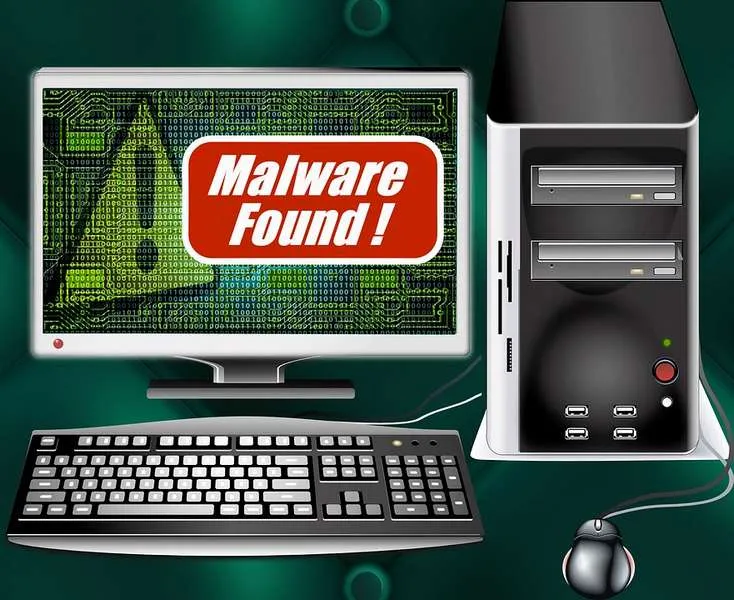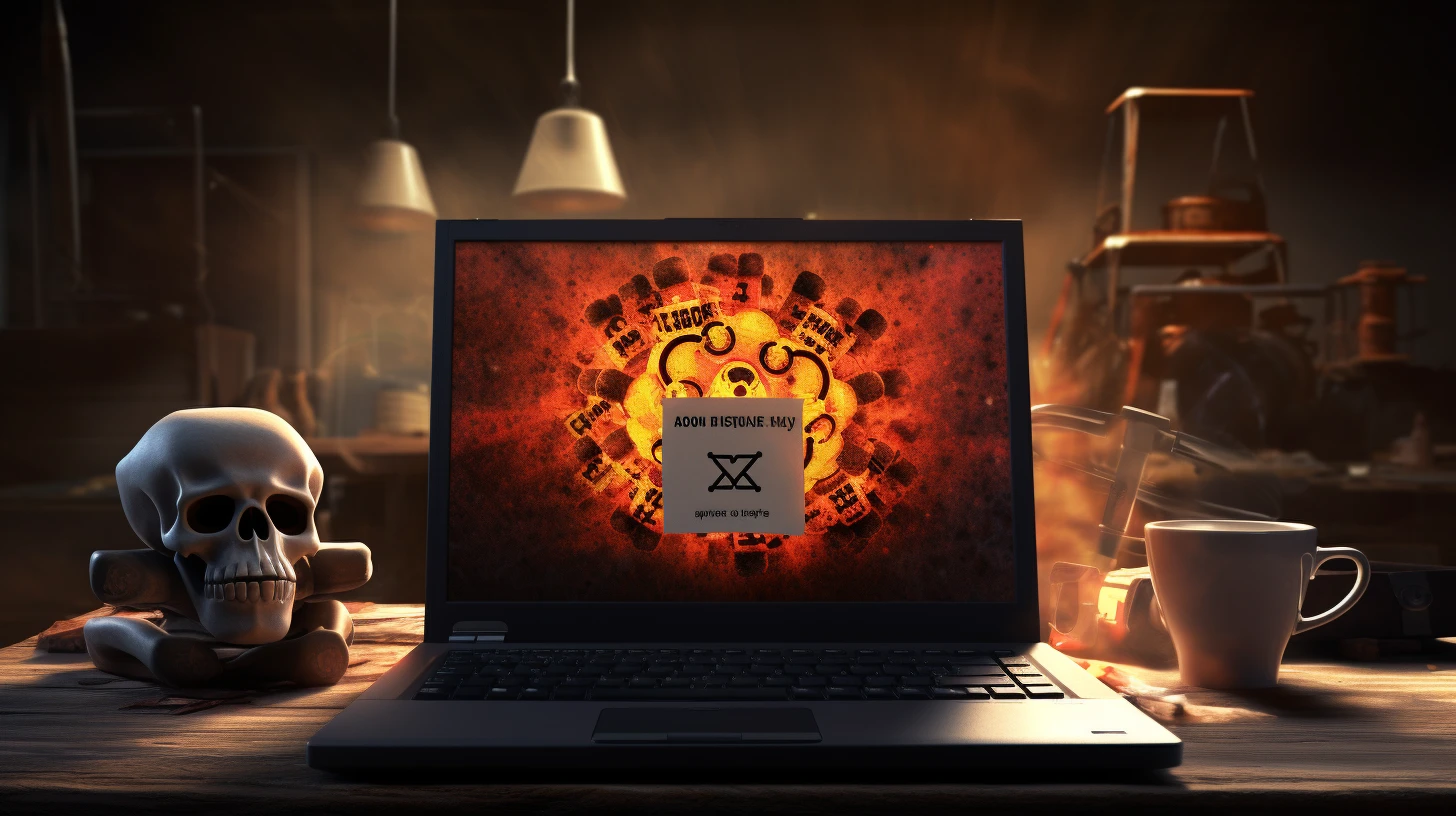Last Updated on August 30, 2023 by tech pappy
A computer virus is a type of malware that infects the operating system and can replicate itself by spreading to other programs and files. The scariest computer viruses typically use malicious code to cause more havoc on unprotected users and organizations. They can even be transmitted through unsecured networks, such as WiFi or Bluetooth connections.
The most common viruses are designed for financial gains, such as ransomware which locks your computer until you pay a fee to get it unlocked again. But there are also viruses designed for espionage purposes, like Flame and Stuxnet.
If you want to protect yourself from these types of attacks then make sure you: always use antivirus software; never open an email attachment unless you know who it is from; only download files from trusted sources; keep your passwords unique and strong; update all your software regularly; turn on automatic updates
The scariest computer viruses in the world
The term virus, in the strict sense of the word, designates a group of small programs with malicious code that can reproduce or replicate themselves and cause damage to the operating system’s executable files.
A number of viruses have been discovered since the early 80’s causing a great deal of concern among computer users from all over the world. Most anti-virus programs try to detect and eliminate known viruses, but new ones are always appearing, so it’s important to keep your software up-to-date.
Here are some of the most notorious computer viruses in history:
The Elk Cloner
The first scariest computer viruses we will discuss is the Elk Cloner virus. This virus was the first widespread PC virus, appearing in 1982. It infected Apple II computers and spread through floppy disks.
Jerusalem
The Jerusalem virus was discovered in 1989 and is believed to have originated in the Middle East. It infects both PCs and Macs and is spread through email attachments.
Michelangelo
The Michelangelo virus was first detected in 1992 and caused a great deal of panic among computer users because it was believed that it would destroy all the data on infected machines on March 6th, Michelangelo’s birthday.
Cryptolocker
Cryptolocker is a type of ransomware that encrypts files on a computer and asks for payment in return for a decryption key. According to the US government’s view, the CryptoLocker malware-infected PCs throughout the world between September 2013 and May 2014, demanding more than $1 billion in ransom each year.
Slammer
On Saturday, January 25, 2003, a vicious computer worm known as SQL Slammer hit the internet. It disabled most of the world’s SQL servers and slowed down internet traffic. Microsoft revealed that some of its computers had been unpatched and that its MSN Internet service was also suffering from slowdowns due to the Slammer virus.
Melissa
Melissa was one of the most severe and earliest cyber threats in history. Melissa debuted in March 1999, spreading via email within hours and infecting thousands of machines. The estimated cost of cleaning and repairing damaged computer systems as a result of the Melissa virus was $80 million, according to the US FBI report.
Mydoom
In 2004, one of the scariest computer viruses in history was the Mydoom virus. MyDoom infected millions of computers. It’s technically a “worm” that spreads via mass emailing. It shattered previous records set by the Sobig worm and ILOVEYOU to become the fastest-spreading e-mail worm ever.
The Love Bug or I LOVE YOU virus
In 2000, the I LOVE YOU computer virus was distributed by offering a phony “love letter” that appeared to be a harmless text file. This attacker, like Mydoom, distributes copies of itself to all of the computer’s contact list contacts. Within a few days after its May 4 debut, it had infected over 10 million PCs.
Code Red
The Iran Hardware Working Group was a computer worm that emerged in July 2001 and infected computers running Microsoft’s IIS web server. According to The Guardian, the FBI had sent strong alerts to businesses asking them to protect themselves against this virus in August 2001.
How to avoid becoming a victim of computer viruses
The best way to protect your computer or laptop is to install anti-virus software. Also, make sure you get the latest updates for your system and all of its programs. To prevent attacks by hackers via email, never open email attachments (especially if they come from suspicious senders) unless you are absolutely certain that they are not infected.
In order to avoid becoming a victim of ransomware, make sure you regularly back up all your data. Also, do not use the same passwords for different accounts – this allows hackers access to all your accounts after getting into one of them. Please see this post for the top 3 ways to make your password safe.
You should always exercise caution when surfing the web and refrain from clicking on links that seem suspicious or downloading files from unknown sources. The scariest computer viruses have been around for a long time, and they show no signs of going away any time soon.
As technology continues to evolve, so do the methods that cybercriminals use to exploit unsuspecting computer users.
What is the best way to remove a virus from your computer?
There are a few different ways that you can remove a virus from your computer. One way is to use an antivirus program to scan your computer for viruses and remove them. Another way is to use a virus removal tool, which is a program specifically designed to remove viruses.
You can also try using a bootable CD or USB drive, which allows you to scan your computer without ever having to load the operating system. One of the best ways to remove a virus is by using an antivirus program, such as AVG or Avast! Antivirus. There are many different antivirus programs available on the market today, both free and paid.
Strategies for avoiding future infections
There are a few simple things that you can do to help avoid future infections. First, make sure to keep your computer’s software up to date. Install the latest security patches and updates as soon as they become available. Second, be vigilant about what you click on. Never open emails from unknown senders, and be careful about the websites you visit.
If a website looks suspicious, or if an offer seems too good to be true, it probably is. Third, use strong passwords and keep your computer’s security settings high. This will help protect your computer from unauthorized access.
Finally, back up your data regularly. This will help ensure that you don’t lose any important files if you have to restore your Operating System.
The dangers of not updating your antivirus software regularly
There are many dangers to not updating your antivirus software regularly. One of the most obvious dangers is that you may not be protected from the latest viruses and malware. If your computer is infected with a new virus, and your antivirus software is not up-to-date, you may not be able to protect your computer from being infected.
Another possibility is that your antivirus software will identify legitimate software as a virus. This often happens when new viruses are identified, but the makers of the antivirus software haven’t yet created signatures for them.
Your antivirus may say that the file is infected, even though it isn’t. Another thing to be aware of with this particular danger is that the antivirus software may not be able to remove the virus, which could lead to even more problems.
Another danger of not updating your antivirus software is that you may be susceptible to attacks from hackers. Hackers often use viruses and malware to get into people’s computers in order to steal their information. If your computer is infected, the hacker will be able to enter it and have full access.

Updating your antivirus software regularly can keep you from being hacked, as well as prevent many other problems. In order to stay safe from viruses, hackers, and all of the dangers that come with them, make sure that you update your antivirus software regularly. Not doing so can put your computer at great risk for infection, or worse.
The scariest computer viruses and malware are a serious threat to the safety and security of your digital life. You can’t let yourself become a victim without taking precautions, or risk becoming infected with something that could compromise every aspect of your online presence.
It’s not enough to just update your antivirus software if you do not want to be a victim of one of the scariest computer viruses listed above; you also need to take proactive steps like installing an ad blocker, using strong passwords for all accounts, and recognizing when emails from unknown addresses might be malicious.
Above all else though, it is imperative that you keep up-to-date on any changes in cybersecurity law or regulations so that if anything does happen such as the recent change in GDPR guidelines – you’re prepared and know what to do about it before it becomes too late!


